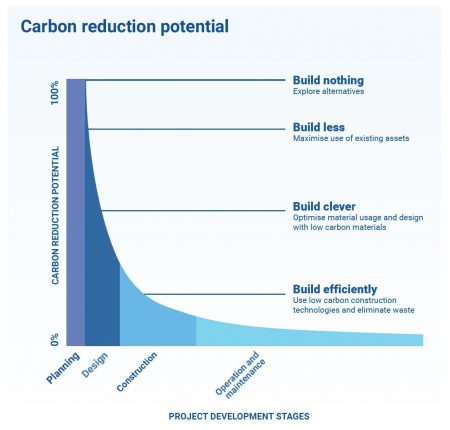Embodied carbon
The Hidden Impact
by Margie
Carbon, the term used in the built environment industry and increasingly in everyday life, refers to Carbon Dioxide (CO2) and other Green House Gas (GHG) emissions, the cause of human-induced climate change. To try and avoid the dire consequences of a global temperature rise of 1.5 degrees, the world has agreed on the importance of net zero GHG emissions by 2040, and the building industry will need to meet these targets.
Improvements in energy efficiency of buildings (Operational Carbon) is moving us towards this goal. However, Embodied Carbon, the other side of the decarbonisation equation has been neglected.
 A recent study of more than 650 buildings concluded that the contribution of Embodied Carbon to a buildings’ total emissions is far higher than previously thought (Röck et al 2020). Instead of the commonly perceived levels of 10-20%, Embodied Carbon is responsible for over 50% of emissions, and is rising both in proportional and absolute terms. This is due to increased operational efficiencies of new builds, higher usage of renewable energy, and little change in the reduction of Embodied Energy.
What this means is that the building industry needs to begin seriously considering the Embodied Carbon in the materials and processes used to create our built environment.
How do we do this?
Broadly speaking, prevention is the solution. The earlier the decarbonisation discussions the more effective, as can be seen in this diagram.
A recent study of more than 650 buildings concluded that the contribution of Embodied Carbon to a buildings’ total emissions is far higher than previously thought (Röck et al 2020). Instead of the commonly perceived levels of 10-20%, Embodied Carbon is responsible for over 50% of emissions, and is rising both in proportional and absolute terms. This is due to increased operational efficiencies of new builds, higher usage of renewable energy, and little change in the reduction of Embodied Energy.
What this means is that the building industry needs to begin seriously considering the Embodied Carbon in the materials and processes used to create our built environment.
How do we do this?
Broadly speaking, prevention is the solution. The earlier the decarbonisation discussions the more effective, as can be seen in this diagram.
 Edmiston Jones is able to design strategies to reduced embodied carbon from the early concept phase through to construction. Contact us so we can share the details of this critical process.
Edmiston Jones is able to design strategies to reduced embodied carbon from the early concept phase through to construction. Contact us so we can share the details of this critical process.
 A recent study of more than 650 buildings concluded that the contribution of Embodied Carbon to a buildings’ total emissions is far higher than previously thought (Röck et al 2020). Instead of the commonly perceived levels of 10-20%, Embodied Carbon is responsible for over 50% of emissions, and is rising both in proportional and absolute terms. This is due to increased operational efficiencies of new builds, higher usage of renewable energy, and little change in the reduction of Embodied Energy.
What this means is that the building industry needs to begin seriously considering the Embodied Carbon in the materials and processes used to create our built environment.
How do we do this?
Broadly speaking, prevention is the solution. The earlier the decarbonisation discussions the more effective, as can be seen in this diagram.
A recent study of more than 650 buildings concluded that the contribution of Embodied Carbon to a buildings’ total emissions is far higher than previously thought (Röck et al 2020). Instead of the commonly perceived levels of 10-20%, Embodied Carbon is responsible for over 50% of emissions, and is rising both in proportional and absolute terms. This is due to increased operational efficiencies of new builds, higher usage of renewable energy, and little change in the reduction of Embodied Energy.
What this means is that the building industry needs to begin seriously considering the Embodied Carbon in the materials and processes used to create our built environment.
How do we do this?
Broadly speaking, prevention is the solution. The earlier the decarbonisation discussions the more effective, as can be seen in this diagram.
 Edmiston Jones is able to design strategies to reduced embodied carbon from the early concept phase through to construction. Contact us so we can share the details of this critical process.
Edmiston Jones is able to design strategies to reduced embodied carbon from the early concept phase through to construction. Contact us so we can share the details of this critical process. 
Related News